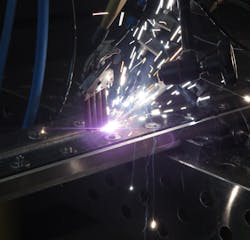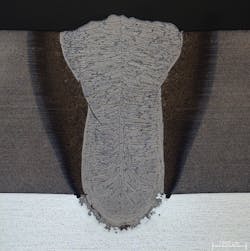Partnership designs steel-aluminum laser welding process for shipbuilding
Lightweight construction with mixed steel-aluminum compounds is already a major topic in the automotive industry. To reduce fuel consumption and carbon dioxide emissions in the shipping industry, such mixed compounds are also being used increasingly in shipbuilding. With these, however, completely different material thicknesses come to bear. In a joint research project, research institute Laser Zentrum Hannover (LZH; Hannover, Germany) has developed a laser welding process for thick mixed joints.
Ship hulls made of steel and aluminum alloy superstructures are primarily used in yacht construction. Such material combinations reduce the overall weight and lower the center of gravity of the ship, thus stabilizing it. Via an adapter, the two different metals are joined securely and with a high mechanical load capacity. This adapter is conventionally manufactured by explosive plating, a complex and costly joining process. In the joint research project dubbed LaSAAS ("Laser beam welding of steel to aluminum for use in shipbuilding"), LZH and nine partners have developed a laser welding process with integrated welding depth control to manufacture such adapters quickly and flexibly.Thus, new design options for these connection elements can be realized. Under static load in the tensile shear test, the adapter pieces manufactured in this way achieve similar strength values like the explosion-proofed adapters. For example, the yield strength of the welded aluminum alloy is exceeded by 52%. Now, in future research activities, it is important not only to achieve a high load capacity, but also a high deformability of the adapter pieces.
Related: Welding steel and aluminum with lasers produces thick metal sheets for light ships
The welding depth control is supposed to ensure the consistent quality of the welding seam even with sheet thickness jumps. Two approaches were investigated in the project: Both the analysis of the spectral process emission and the short-coherence interferometry can both be reliably used for process control. In the process, the welding depth is actively controlled via the laser beam power.A controlled process for laser beam welding of this compound is important to minimize the amount of intermetallic phases between the steel and the aluminum alloy. A too-large phase leads to embrittlement and increases the tendency to crack. Under stress, a premature failure of the connections may occur. Only with the aid of the welding depth control, mixed joints can be welded with relatively high seam quality, especially with varying thicknesses of sheet metal.
For more information, please visit lzh.de.


